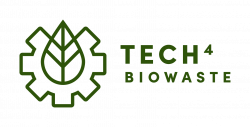Difference between revisions of "Ultrasonication"
| [checked revision] | [checked revision] |
Lars Krause (talk | contribs) |
Lars Krause (talk | contribs) |
||
| Line 10: | Line 10: | ||
== Process and technologies == | == Process and technologies == | ||
During the ultrasonication treatment ultrasound is transmitted through any physical medium by waves that compress and stretch the molecular | During the ultrasonication treatment ultrasound is transmitted through any physical medium by waves that compress and stretch the molecular spacing of the medium through which it passes<ref name=":0">{{Cite book|author=Hugo Miguel Santos, Carlos Lodeiro, and José-Luis Capelo-Martínez|year=2008|section_title=The Power of Ultrasound|editor=José-Luis Capelo-Martínez|book_title=Ultrasound in Chemistry: Analytical Applications|publisher=Wiley‐VCH Verlag GmbH & Co. KGaA|ISBN=9783527319343|place=Weinheim, Germany}}</ref>. The average distance between the molecules will vary as they oscillate about their mean position<ref name=":0" />. Whenthe negative pressure caused for an ultrasonic wave crossing a liquid is large enough,the distance between the molecules of the liquid exceeds the minimum moleculardistance required to hold the liquid intact, and then the liquid breaks down and voidsare created<ref name=":0" />. he average distancebetween the molecules will vary as they oscillate about their mean position. Whenthe negative pressure caused for an ultrasonic wave crossing a liquid is large enough,the distance between the molecules of the liquid exceeds the minimum molecular distance required to hold the liquid intact, and then the liquid breaks down and voids are created. Those voids are the so-called cavitation bubbles<ref name=":0" />. | ||
== Product == | == Product == | ||
Revision as of 14:54, 6 September 2021
| Technology | |

| |
| Technology details | |
| Name: | Ultrasonication |
| Category: | |
| Feedstock: | Biowaste |
| Product: | Biomass (dispersed, disrupted, emulsified, extracted, homogenised) |
Ultrasonication is a physical treatment to disperse, disrupt, emulsify, extract, and/or homogenise biomass beside others via the application of ultrasonic frequencies (>20 kHz).
Feedstock
Origin and composition
The requirements on the origin and composition of the feedstock may vary since the ultrasonication can be utilised at various points in the value chain of biowaste valorisation.
Process and technologies
During the ultrasonication treatment ultrasound is transmitted through any physical medium by waves that compress and stretch the molecular spacing of the medium through which it passes[1]. The average distance between the molecules will vary as they oscillate about their mean position[1]. Whenthe negative pressure caused for an ultrasonic wave crossing a liquid is large enough,the distance between the molecules of the liquid exceeds the minimum moleculardistance required to hold the liquid intact, and then the liquid breaks down and voidsare created[1]. he average distancebetween the molecules will vary as they oscillate about their mean position. Whenthe negative pressure caused for an ultrasonic wave crossing a liquid is large enough,the distance between the molecules of the liquid exceeds the minimum molecular distance required to hold the liquid intact, and then the liquid breaks down and voids are created. Those voids are the so-called cavitation bubbles[1].
Product
Ultrasonication can be used to produce:
- Biofuels
- Emulsions (such as nanoparticles, nanoemulsions, nanocrystals, liposomes, wax emulsions)
- Extracts from biomass (such as polysaccharides[2], oil, anthocyanins and antioxidants[3])
- Purified wastewater
Furthermore, ultrasonication is also utilised in following processes:
- Adhesive thinning
- Cells disruption
- Degassing liquids
- Polymer and epoxy processing
- Ultrasound assisted oxidative desulfurisation of crude oil[4]
Technology providers
Patents
References
- ↑ a b c d Hugo Miguel Santos, Carlos Lodeiro, and José-Luis Capelo-Martínez, 2008: The Power of Ultrasound. Ultrasound in Chemistry: Analytical Applications. José-Luis Capelo-Martínez (Ed.). Wiley‐VCH Verlag GmbH & Co. KGaA, Weinheim, Germany.
- ↑ , 2017-09-01: Polysaccharides from macroalgae: Recent advances, innovative technologies and challenges in extraction and purification. Food Research International, Vol. 99, 1011–1020. doi: https://doi.org/10.1016/j.foodres.2016.11.016
- ↑ , 2013-09-01: Effect of ultrasound frequency on antioxidant activity, total phenolic and anthocyanin content of red raspberry puree. Ultrasonics Sonochemistry, Vol. 20, (5), 1316–1323. doi: https://doi.org/10.1016/j.ultsonch.2013.01.020
- ↑ , 2020-05-01: Study on ultrasound-assisted oxidative desulfurization for crude oil. Ultrasonics Sonochemistry, Vol. 63, 104946. doi: https://doi.org/10.1016/j.ultsonch.2019.104946